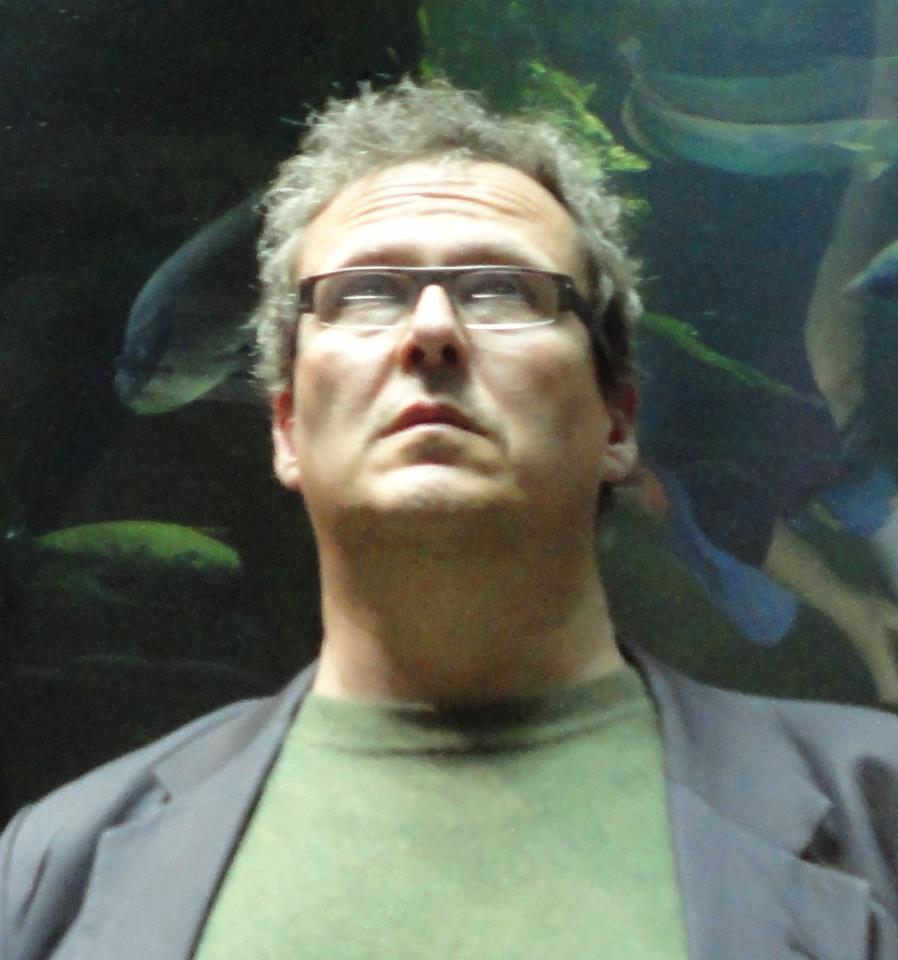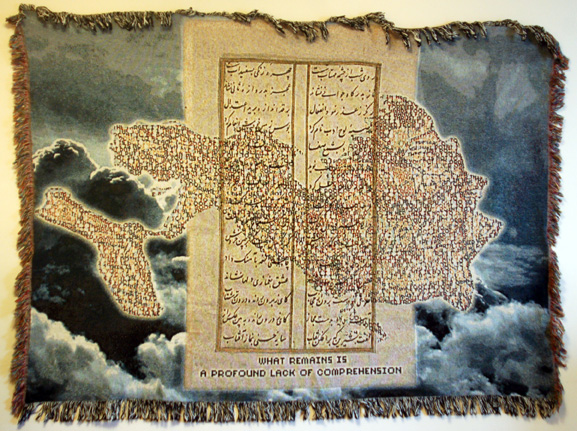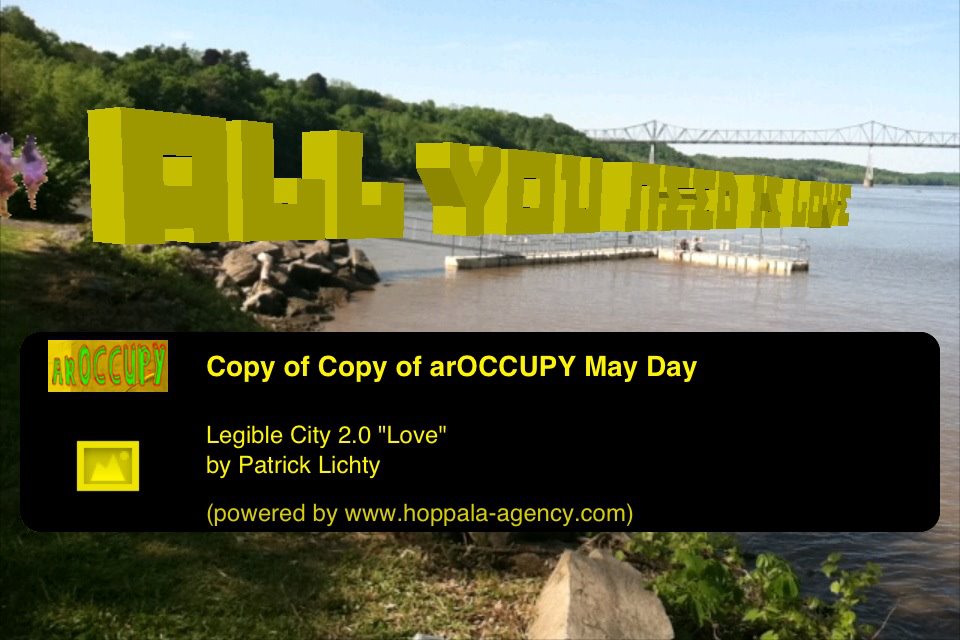By Eva Kekou, 4Humanities International Correspondent
Our interview this week is with Patrick Lichty, who, among many things, is a co-founder of the performance art group Second Front, an animator for the activist group The Yes Men, and Assistant Professor of Interactive Arts & Media at Columbia College Chicago. We talked about art, Second Life, academia in the US, and many other topics relating to the humanities.
Eva Kekou: How did you get involved in the arts? What is your academic and professional background?

As for my pedigree, I am largely home-schooled/self-taught, as I only went to art school 14 years into my practice after having published work at the Venice Biennial, shown in the Whitney Biennial (as part of RTMark), and shown animation at the Sundance Film Festival (as part of The Yes Men). I started showing my work seriously around 1989, and focused on it as a career around 1990, and have probably made, curated, wrote about 750-1000 pieces.
EK: Why conceptual art, and, more specifically, why technologically-based conceptual art? What is so interesting and intriguing for you there?
PL: I’m not always conceptual – sometimes I can be very, very formal. But that complicates the question, and rightfully so. What I do is explore culture through writing and then making work from that thought. The goal is to perform research that allows me to gain insight about the world around me. I’m an insatiable autodidact, and my work is my research tool to satisfy that essential need to question the world and then converse with the community about the questions I have.
EK: I know your work about Second Life. Can you give us some more information about it, referring to any of your projects you think significant to your career?
PL: In 2006, I was at the Banff New Media Institute, rooming with Jeremy Owen Turner, who knew I had been interested in virtuality ever since the mid-90’s. I mentioned that Second Life had been gaining popularity in the mass media and that the technology had improved vastly, and I saw it as an audience of 25,000 or so connected ‘early adopters’ who would be a great group of people to play with.
In addition, I was looking for new technologies that would allow me to create new animations for The Yes Men with shorter lead times, and I saw machinima (the use of game engines to make video) as a way to accomplish this. However, Second Front became successful beyond my expectations, and we have shown alongside amazing artists like Jeremy Blake and Cao Fei. We wound up with Fluxus co-founder Al Hansen’s daughter Bibbe Hansen in the group, who joined after another Fluxus member, Larry Miller, told me she was in-world. We have done about fifty performances to date, and Bibbe and I have also been working on a co-project called Virtual FLUXUS, where we use Second Life, etc. to explore performances in the FLUXUS tradition.

EK: Your book Variant Analyses will be out in 2013 from the Institute for Networked Culture. I am very excited about reading it and would like you to give us more info about it and your work there.
PL: Variant Analyses, I think, will be key to getting a deeper understanding of my work in that I feel that I am a theorist who makes art. It is a collection of essays from the last 20 years, and is my first published set of essays from various sources. It is my hope that this is ‘Volume One’, as I have at least twice the number of essays in my backlog from conferences and talks than are contained in VA. I cover three main areas of my cultural inquiry: New Media Art, Culture, and Politics. For me, these three areas of inquiry deal with distinct issues specific to themselves, and I deal with them in very different ways. New Media formalism, activism, and literary theory are all very different beasts.
EK: I am aware of your collaboration with SenseLab. Could you please give us a report of your residency there and give us more details about the ‘Into the Midst’ project you worked on there?
PL: Last year, my good friend and colleague Nathaniel Stern introduced me to Erin Manning and Brian Massumi, who all invited me to be part of the ongoing SenseLab research group at Concordia University in Montreal, which had a residency this year in which we would explore the possibilities of a collaborative performance in the SATOSphere at the Société des Arts Technologiques in Montreal. For this, we brought together about 20 artists, dancers, theorists, and technologists who descended upon Montreal for a week, making, cooking, dancing, and creating media.
Nathaniel Stern and I were making forms of panoramic photography for the dome, and I also devised ways to mount projectors on bodies that would go around the space placing text on the dome and interacting with visitors. The piece was radical; we ran, danced, shared food, and performed amidst projections for four hours, and one person actually ran from the space when a hemispherical image I made turned the space into a giant bowl of raspberries!

EK: You have a long bio listing a number of exhibitions among many fellowships and residencies. Could you discuss three of them in some detail?
PL: Three! That’s an audacious request…
For the sake of brevity, you know about the SenseLab residency. That was one of the most inspirational ones I have ever been part of.
I think that the first, and one of the most formative would be the RTMark/The Yes Men’s Herb Alpert/CalArts fellowship, which included a residency that we facilitated at the California Institute for the Arts (CalArts). It was also fun to meet the legendary jazz performer and record executive, Herb Alpert. He’s like, a good 2 meters tall with this curly salt-and pepper hair and round glasses, and he shook our hands and said in a penultimate jazzman way, “You know, you cats are ‘out there’, man…” That was a cool and surreal moment.
However, for the residency, we critiqued grad work, including an interactive work by Ezra Buchla, the son of Bob Buchla, one of the two progenitors of the modular music synthesizer (the other being Robert Moog) We talked about activism and Tactical Media, and had a general good time with the students. That was in 2003.

EK: Apart from being a successful artist you have been a successful academic with a lot of teaching experience. What do you find challenging in teaching? What is the biggest challenge in academia in the US today?
PL: That’s a really tough question, as academia in the United States is an ideological battlefield right now in light of the Great Recession that we are experiencing here. There is a hotly contested conversation about whether institutions of higher learning should focus on skills/jobs or more traditional forms of liberal education. I think the ongoing increasing pressures put forth by global capitalism for increasing profitability and efficiency are radically changing the face of education in the US, and perhaps I like the old, ‘ivory tower’ conception of higher education. It’s a difficult matter.
First of all, before talking critically about the educational system, I want to say why I became an academic after fifteen years of being an independent artist. I wanted to be part of something larger than myself, as I feel that being an independent artist can be a selfish endeavor, but perhaps not when you think about working in activism. It’s that I wanted to work at lager scales with more people, and the academy allows that. I also love being in an environment where you get to toss ideas around with students – they have a wonderfully fresh way of looking at things, and you can give them your experience.
What’s the biggest challenge with contemporary American education? Under President Bush, the US instituted an educational program called ‘No Child Left Behind’. In short, it is an extension of Neoliberal efficiency measures, and it instituted standardized testing throughout the public educational system. This has resulted in ‘teaching to the test’, the upper classes pulling their children out of the public schools, and the decimation of qualitative skills like critical thinking. So, what I get at the introductory level in college are students who are lacking in language skills, expect for rote memorization and purely skills-based training, and you need more than that to survive. So, perhaps I have developed a ‘Morpheus Complex’ and seek to give out Red Pills to my students, breaking them of their previous training so that they can engage in activities like critical thinking and meta-learning.
EK: You also have a long list of publications in various formats (journals, conference papers, etc.). How do you think that moves your work and research forward?
PL: This is very simple. Structurally, I feel that my practice is research, of which my writing is at its core. Through writing and theory, I work through my ideas, which then manifest as what I call ‘material symptoms’ in media, object, and gesture. So, perhaps writing and theory are manifest workings-through of my ideas that emerge in my art and performance. I think it’s important to sort your thoughts out with some element of clarity before making, so there you are. However, I don’t think that all your ideas have to be made, and that some work is not premeditated, but that being said, I enjoy writing, sketching out, and theorizing my ideas, and that advances my thought.
EK: Retrospectively, how was 2012 for you in terms of your teaching, research and art projects?

To be more concise, there are two foci of my work – one has to do with the exploration of the boundaries of the physical and virtual, and the other has to do with activism and the investigation of love, affect, and concern through media – which seem to be in evidence this year.
EK: What are your future projects and plans?
PL: First, I’m very excited about the book coming out in 2013. I hope that it is the start of many. I already have at least one solo show of works from the early 90’s planned, and I am working on a very large project incorporating image-based Augmented Reality with tapestry. I’m doing a couple residencies this year, and I hope to get a new Second Front DVD out, and who knows what happens with work with The Yes Men. All very exciting.